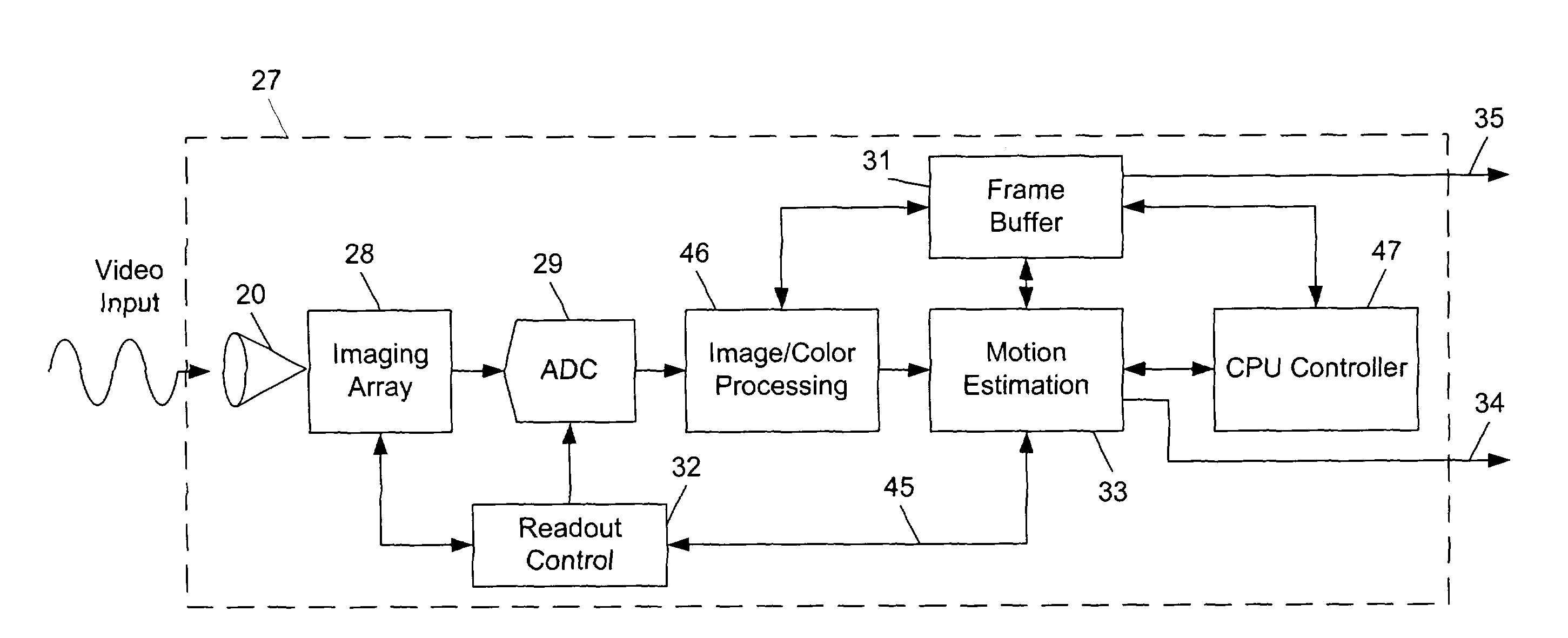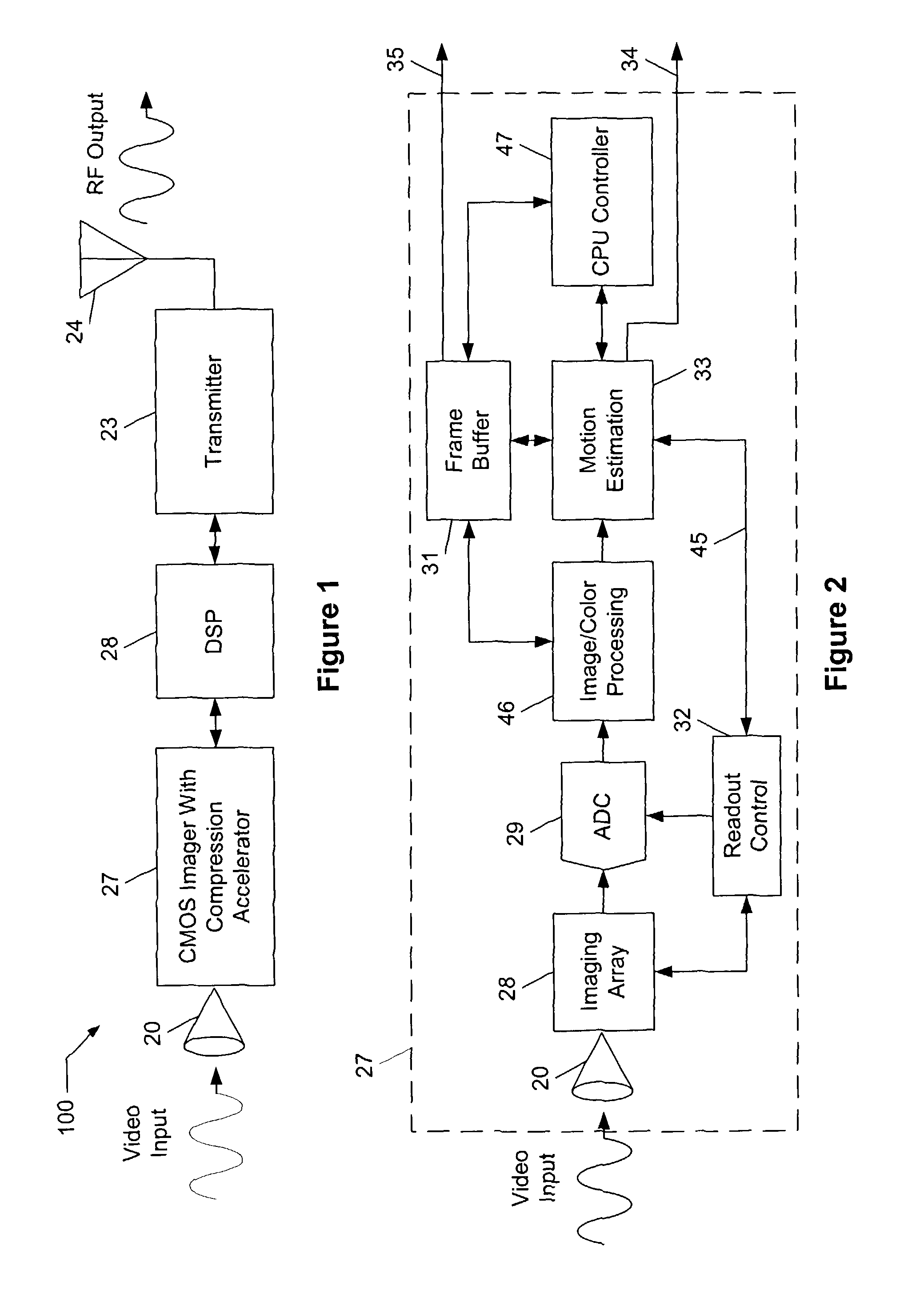Systems and methods for utilizing activity detection information in relation to image processing
a technology of activity detection and image processing, applied in the field of image acquisition and processing, can solve the problem of reducing bandwidth for the sake of quality, and achieve the effects of reducing exposure time or integration time, reducing motion blur, and eliminating motion blur
- Summary
- Abstract
- Description
- Claims
- Application Information
AI Technical Summary
Benefits of technology
Problems solved by technology
Method used
Image
Examples
Embodiment Construction
[0025]The present invention provides systems and methods for receiving, processing, and / or transmitting video images using a central motion detection and / or estimation engine. The present invention provides a variety of functional advantages aided by a motion estimation and / or detection engine. For example, motion blur can be reduced or eliminated by using motion information provided from the motion estimation and / or detection engine. In one particular case, motion blur can be reduced by reducing exposure time, or integration time, during which pixels in an imaging array are gathering light. Reducing the integration time bounds the amount of motion that can occur in a detected scene to a limited period.
[0026]As another example, information from the motion estimation and / or detection engine can be used in relation to video compression. Such motion estimation can include the most computationally significant part of a video compression encoder. In accordance with some embodiments of th...
PUM
 Login to View More
Login to View More Abstract
Description
Claims
Application Information
 Login to View More
Login to View More - R&D
- Intellectual Property
- Life Sciences
- Materials
- Tech Scout
- Unparalleled Data Quality
- Higher Quality Content
- 60% Fewer Hallucinations
Browse by: Latest US Patents, China's latest patents, Technical Efficacy Thesaurus, Application Domain, Technology Topic, Popular Technical Reports.
© 2025 PatSnap. All rights reserved.Legal|Privacy policy|Modern Slavery Act Transparency Statement|Sitemap|About US| Contact US: help@patsnap.com



